🚀 Introducing Micro Amino Drive (MAD) – A Game-Changer in Crop Nutrition! 🌱
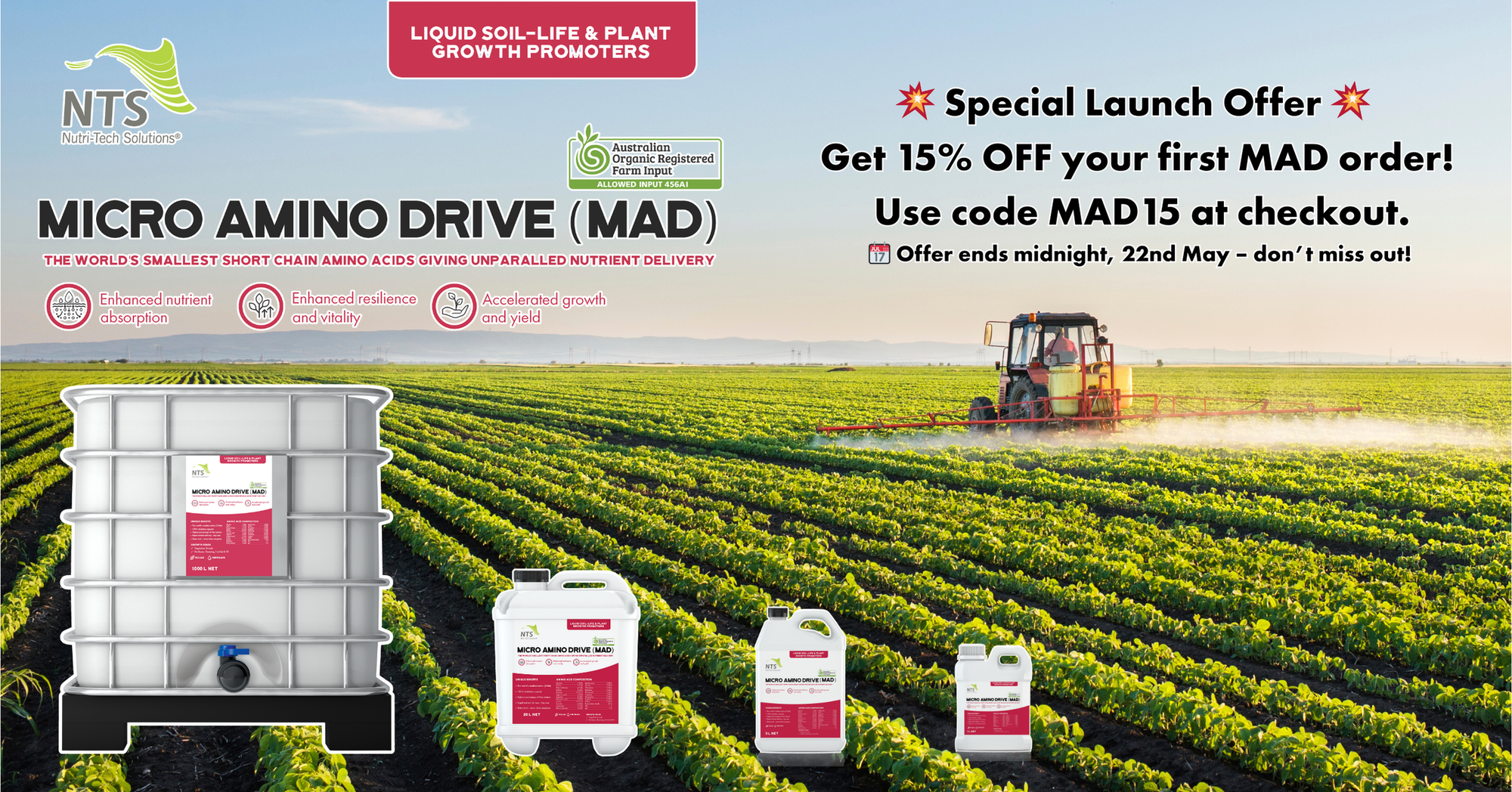
Astounding Aminos – Understanding These Multi-Function Marvels
When considering amino acids in crop nutrition, many will think of them as a more expensive organic N alternative. This is often an input favoured by organic growers, who have few other allowable sources of foliar nitrogen. Nitrogen is, of course, the most abundant mineral within the plant, and shortages can often limit yields in organic agriculture.
Amino acids, typically derived from soy protein, are indeed the building blocks of proteins, but they are also the fundamental components of the enzymes that drive all plant processes, and they are also integral components of structural tissues in plants. That information alone should be enough to encourage experimentation with amino-based plant supplements, but there is so much more….
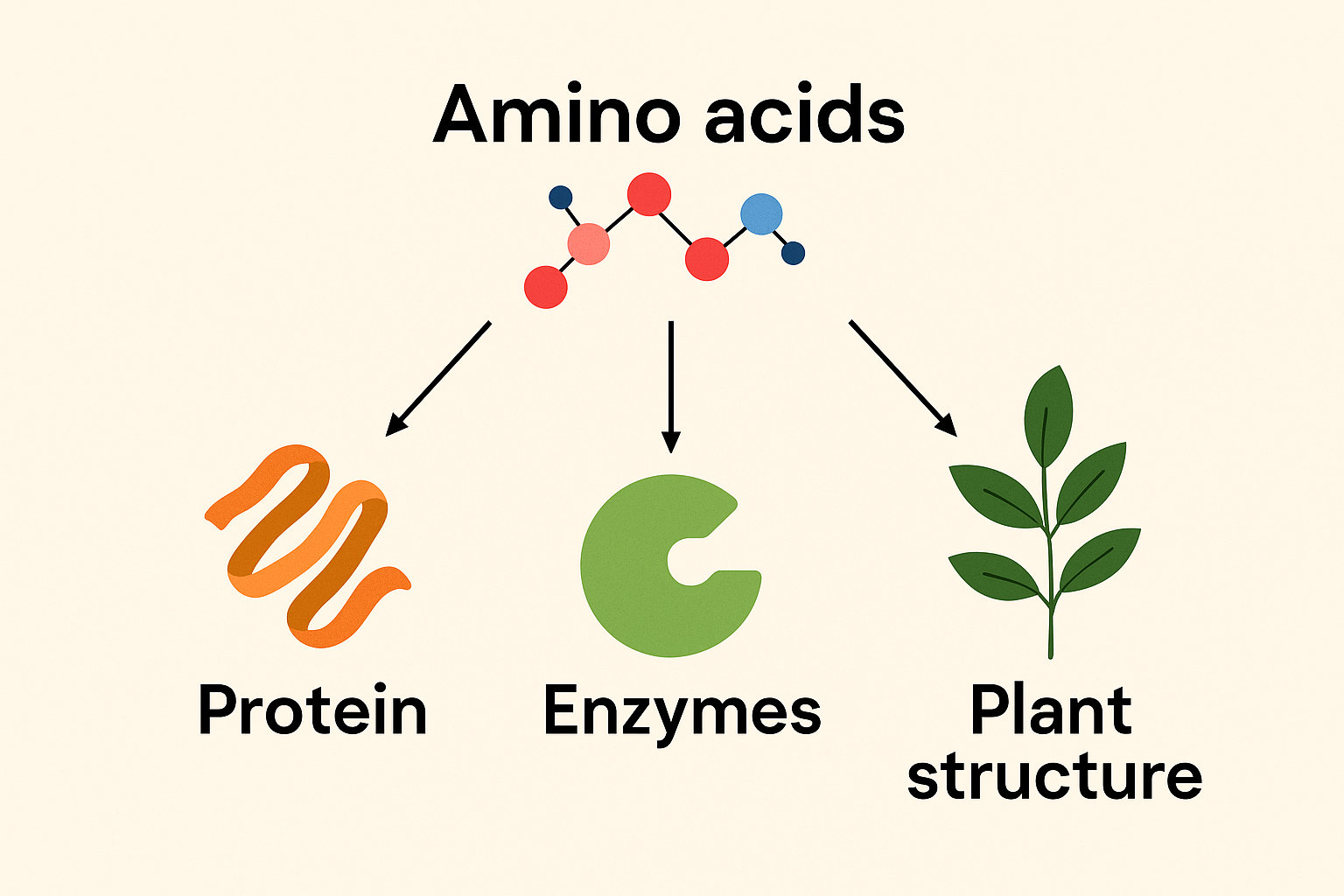
Secondary Metabolites and Osmoprotection
I’m sure you are all familiar with secondary metabolites. These are the phytonutrients that are the essence of food as medicine, and they include alkaloids, phenolics, and plant hormones. Key alkaloids include caffeine, berberine, and quinine. The phenolics include some of the most protective of all plant nutrients, like curcumin, resveratrol, and quercetin. Amino acids are the precursors for these important metabolites.
Amino acids also help plants cope with abiotic stress (e.g., drought, salinity, temperature extremes) and biotic stress (e.g., pests, pathogens) by acting as osmoprotectants and signalling molecules.
What are osmoprotectants, you may be thinking?
They are organic molecules that help plants counter osmotic stress, due to salt, drought, or extreme temperatures. Osmotic stress occurs when there is too much or too little water in the plant cells, and cell functioning is compromised. Some amino acids like proline or glycine betaine, and a range of polyamines, serve as osmoprotectants to increase stress resistance.
This eco-function will only become more important as global heating progresses.
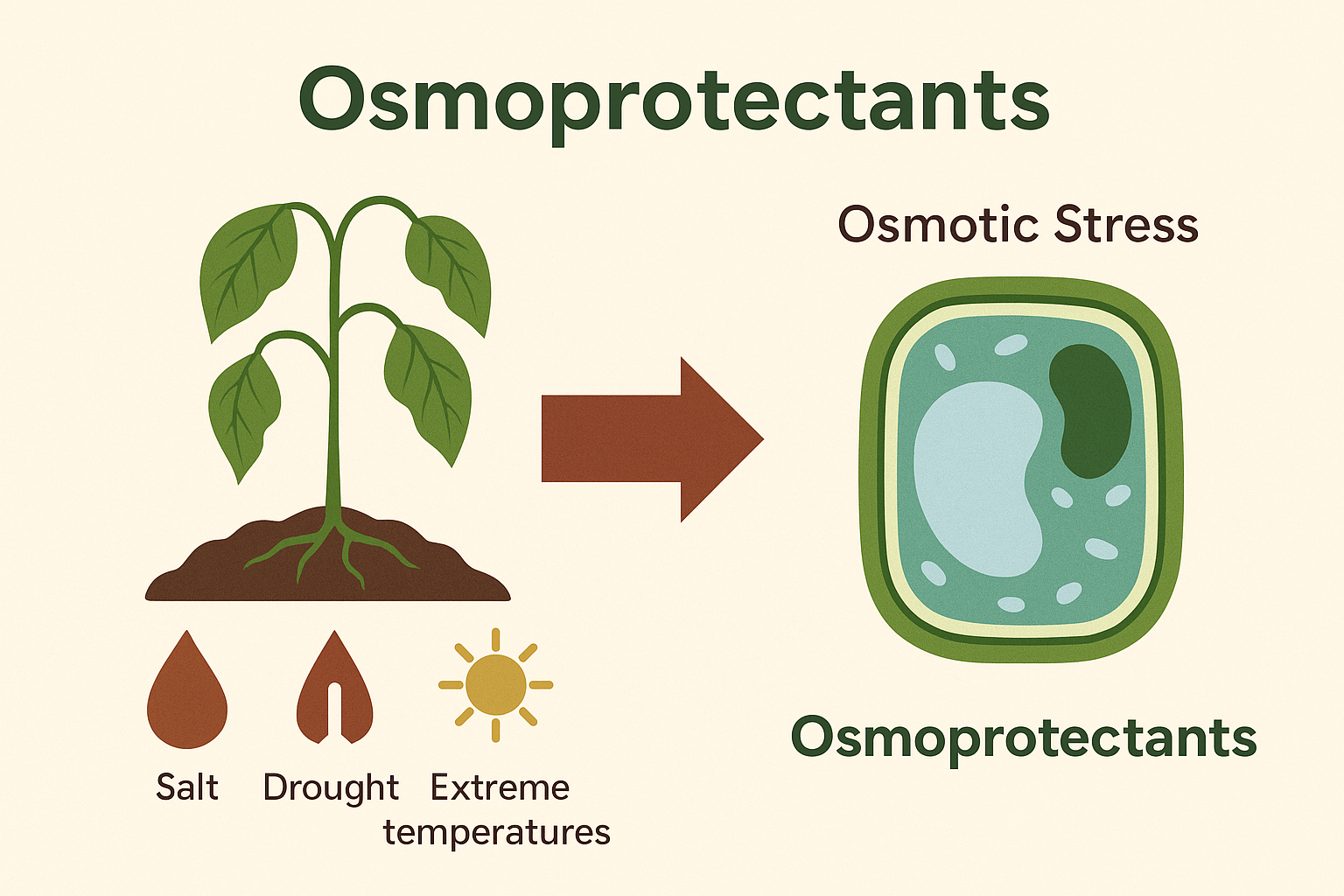
I often speak of photosynthesis as the single most important plant process. This is the machinery that produces the glucose building block of everything. As I have often mentioned, 30% of that sugar is gifted to the army of microbes blanketed around every root, awaiting that sweet, energising treat. The better we manage photosynthesis, the better we do.
Amino acids directly contribute to chlorophyll synthesis, energy metabolism, and the activation of enzymes involved in photosynthesis.
Improved Nutrient Uptake
Amino acids improve nutrient transport and uptake in various ways, including the following:
1) Chelation
I have previously described this phenomenon, where the chelating agent wraps around the positively charged cations like a claw and neutralises their positive charge. This, in turn, helps avoid the traffic jam that can occur at the stomatal openings when positively charged cations are drawn, like a magnet, to a negatively charged leaf surface.
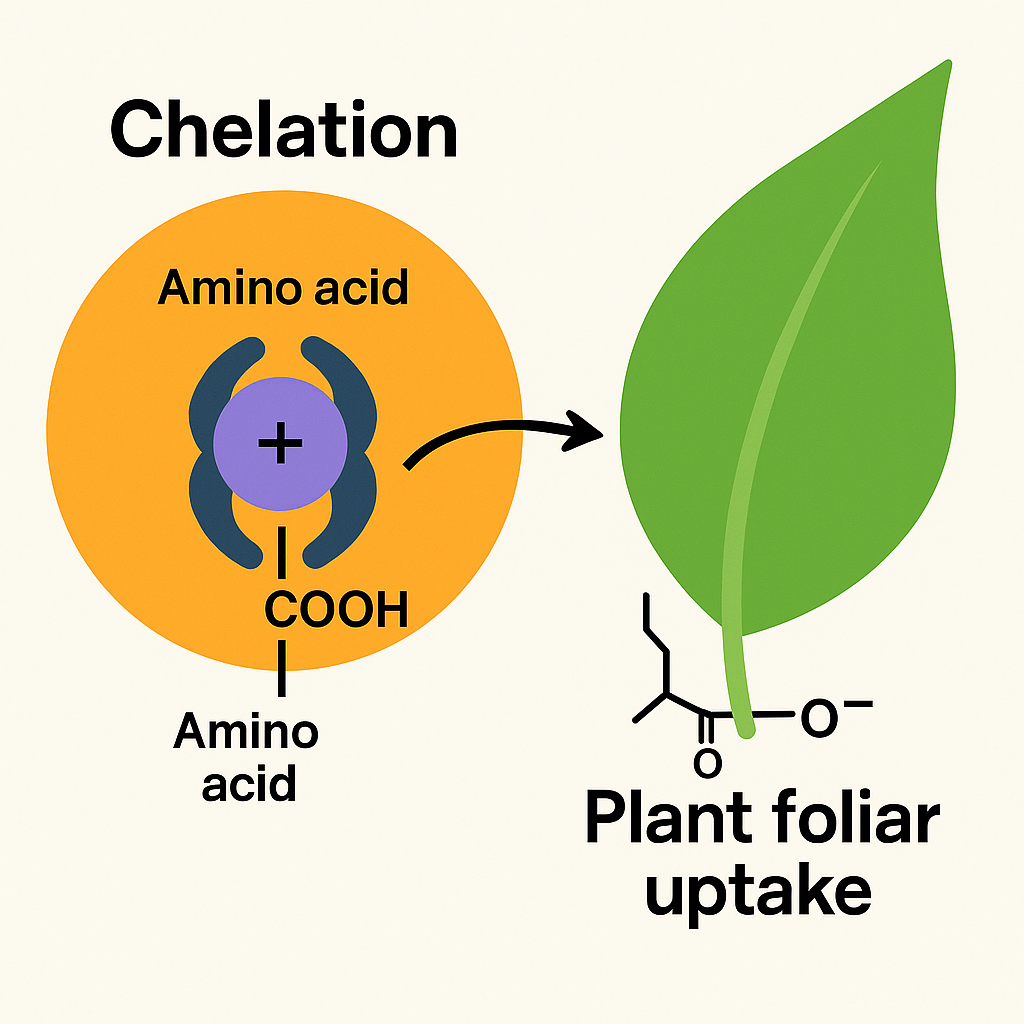
Several amino acids have this chelating capacity, but the most effective by far is glycine. This efficiency relates to its tiny size and associated capacity to smuggle in attached nutrients very rapidly.
2) Root Stimulation
Amino acids are the building blocks for hormones that stimulate root cell division and expansion. For example, tryptophan is a precursor for the auxin called indole acetic acid (IAA). This hormone promotes root growth and lateral development.
Some amino acids can also increase the permeability of root cell membranes, increasing nutrient and water uptake in the process. This is similar to the cell sensitisation neutralisers for which humates have become renowned.
3) Nutrient Transport Within the Plant
Aminos can improve nutrient movement via the phloem and xylem, for more even distribution where they are needed.
For example, glutamine and asparagine transport nitrogen from roots to shoots. Several amino acids can improve transport of key cations like calcium, magnesium, and potassium.
Calcium is the big story here because it is much less mobile compared to Mg and K. That’s why glycine-chelated calcium gives such a wonderful response. This tiny amino carries this sluggish mineral into and around the plant much more efficiently.
4) Increased Nitrogen Efficiency
Many of you may have discovered that the inclusion of a little amino acid with foliar urea delivers an enhanced response, but perhaps you don’t understand the mechanics of this obvious boost.
There are a couple of layers to this synergy:
- Secondly, amino acids increase stomatal opening and also speed the uptake of foliar urea via stimulation of amino acid transporters in leaf cells.
- There is also reduced ammonia volatilisation with foliar urea in the presence of amino acids.
Firstly, amino acids directly contribute to protein and enzyme synthesis, reducing the metabolic lag time required to utilise urea-derived nitrogen.
This allows for faster greening, better growth response, and higher yields, compared to urea alone.
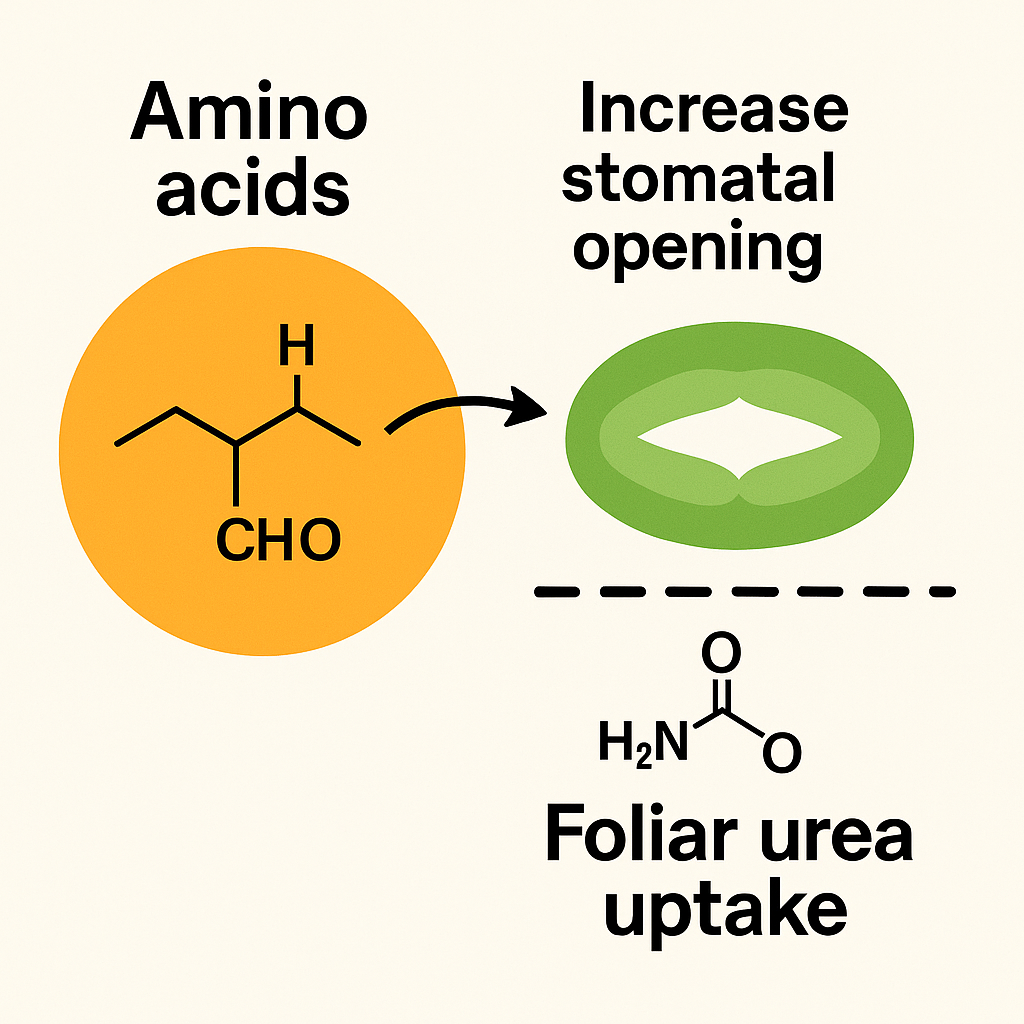
Fruiting Boost
Finally, there is substantial research demonstrating that amino acids can improve pollination, fruit set, and fruit development.
A suite of amino acids are involved in these processes, including:
- Proline, arginine, glycine, glutamic acid, tryptophan, cysteine, and methionine
These amino acids enhance pollen viability, fertilisation success, and fruit development.
Micro Amino Drive (MAD)

It should now be clear that amino acid supplementation can be very productive, but now I’m going to get excited…….
The digital world abounds with revolutionary, breakthrough magic bullets, that we apparently all need now! The grandiose claims often wash over us like water off a duck’s back—often without arousing a single quack of interest.
Then, there are the genuine watershed moments, where a new product or strategy can be an authentic game changer. I believe we have recently discovered that game changer, and I need to explain my enthusiasm.
Amino acid products are typically derived from breaking down soy protein using acid hydrolysis or enzymic extraction. Both processes are harsh and result in some degree of collateral damage.
The breakthrough amino acids that have me so excited are derived from bacteria. A unique group of bacteria are fed a diet of wood bark—a coarse, fibrous material typically favoured by fungal cellulose digesters.
However, in this unique case, voracious bacteria use the cellulose and hemicellulose components of the wood bark to create a rich lode of tiny amino acids.
These aminos are then concentrated, the bacteria are removed, and we have our new biological amino acid product called:
Micro Amino Drive (MAD)
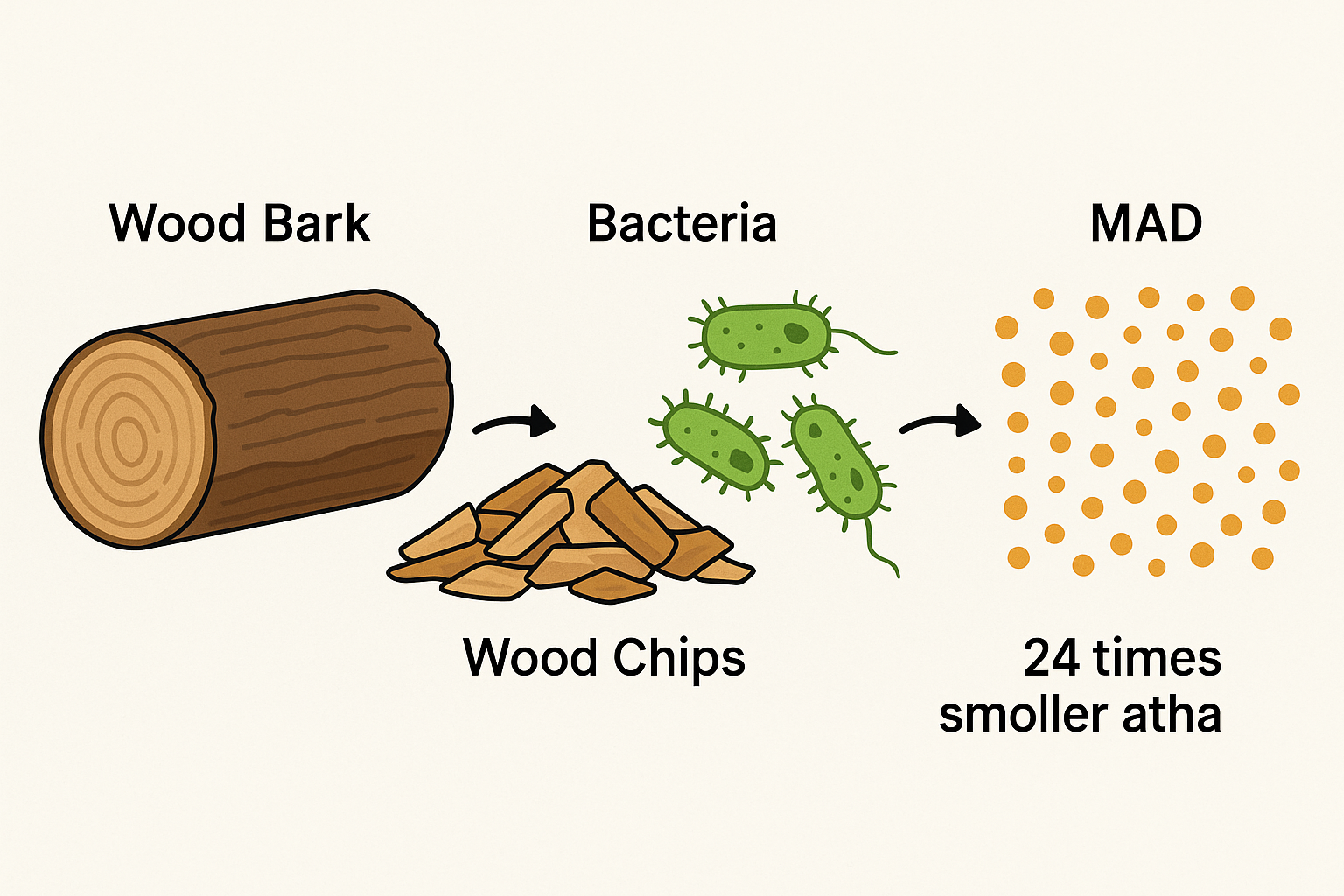
MAD vs Other Aminos
There are three key parameters that determine the quality, efficiency, and performance of amino acid inputs:
1) The Average Size of the Aminos
The smaller the molecular size, the better the performance. Amino acid size is measured in kilodaltons (KDa).
- Soy-based products: ~120 KDa
MAD: just 5 KDa
That’s equivalent to 0.0001 microns and 24 times smaller than the other options!
The full spectrum of aminos in MAD are tiny. We are currently comparing MAD to glycine chelation, and if it outperforms glycine, it will be a dramatically more cost-effective alternative—while also providing the full spectrum of amino acid benefits.
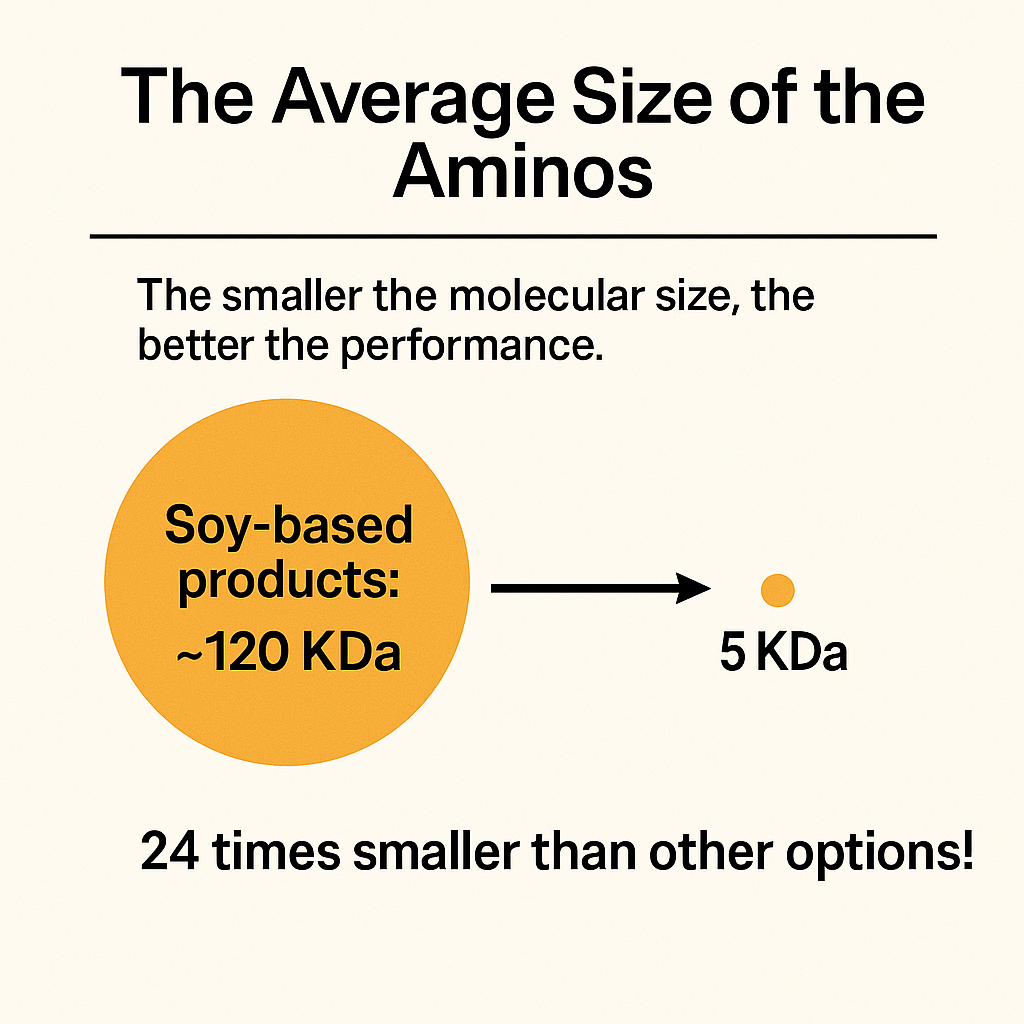
2) The Comparative Chelating Capacity
Acid hydrolysis, the most common commercial technique:
- Destroys tryptophan
- Degrades serine, threonine, and cystine
- Deamination reduces metal binding affinity
- Converts L-form to less-effective D-form (racemisation)
Enzymic extraction is gentler:
- Offers selective cleavage without damaging key aminos
- Produces small peptides with often better chelation
- No deamination
- Retains bioavailable L-form
MAD, derived from bacteria, retains full chelation and delivers aminos in the more effective L-form.
3) The Relative Percentage of Small Chain Amino Acids
- MAD: 18% free aminos; no peptides exceed 4 chains
- Enzymic: ~10% free aminos with much longer peptides
MAD features better peptide stability, which equates to better long-term release and better foliar/root uptake.
Chelation power surpasses enzymic extraction, particularly in relation to Fe, Cu, Zn, and Mn.
Application Ideas
- Standalone use:
- 1 L/ha in pasture & broadacre
- 2 L/ha in orchard & vine crops
- Seed treatment: 2 L/tonne
- Stress relief: 1 L/ha
- Urea synergy: 300–500 mL/ha
- Chelation support: 1 L/ha

In our initial trial work, where we used it as a standalone crop supplement, Micro Amino Drive (MAD) outperformed all other aminos, with an obvious enhancement of crop health and vitality.
When I shared this finding with the Professor who developed this breakthrough amino, his response was:
“What are you doing using it by itself? Its power relates to its unparalleled chelation and delivery of other minerals and nutrients.”
That misguided trial still produced an average of 46 first flowers on tomatoes, vs 20 on the control—a strong pre-flower foliar response.
Interested in a MAD Response on Your Crop?
📞 Contact NTS on 07 5472 9900
📧 Or email sales@nutri-tech.com.au
Experience this exciting new amino acid breakthrough for yourself.
Try MAD – Special Launch Offer!
🌟 15% OFF Micro Amino Drive for one week only!
🗓️ Ends midnight, 22nd May
🎟️ Use code MAD15 at checkout
📞 Call (07) 5472 9900 or email sales@nutri-tech.com.au to experience this amino acid breakthrough.

